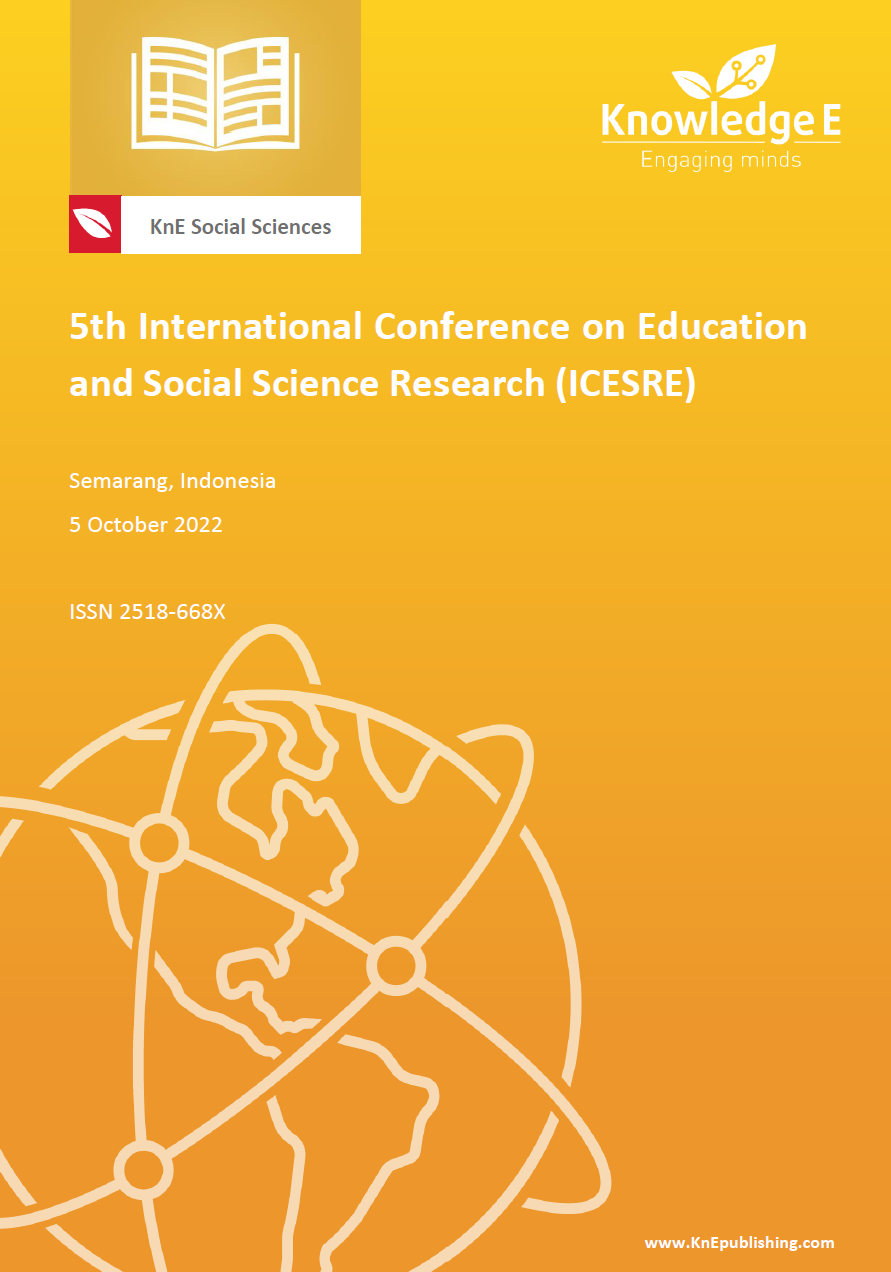Naming Traditional Javanese Food Based on The Experience of The Sense of Motion
DOI:
https://doi.org/10.18502/kss.v7i19.12453Abstract
Various Javanese foods have the same ingredients and taste, but they vary in name based on the region it is made in. The difference is caused by people’s sensual expressions based on the traditional food they have. The senses discussed in this paper are limited to the sense of motion. This paper uses a qualitative method to explain and describe various data points. The analysis techniques used were direct (agih) and indirect (padan). The direct technique is an analysis of language elements, in this case, related to the formation of words that are used as food names; while the indirect technique is an analytical technique that connects elements of language with elements outside of language, in this case, related to the iconic depiction of the human senses. The results showed that the name of the foods was motivated by the description of the sense of motion, such as cucur, sawut, cenil, ongol-ongol, gablok, jadah, and oblok-oblok.
Keywords: traditional food; sense of motion; language elements
References
[2] Auracher J. Sound iconicity of abstract concepts: Place of articulation is implicitly associated with abstract concepts of size and social dominance. PloS One. 2017;12:e0187196.
[3] Sunarya S, Sutono A. Language sounds in Javanese words: Onomatopoeia, phonesthemic and language logic. Budapest International Research and Critics Institute (BIRCI-Journal): Humanities and Social Sciences. 2020;3:3504–3514.
[4] Creemers A, Don J, Fenger P. Some affixes are roots, others are heads. Natural Language & Linguistic Theory. 2018;36:45–84.
[5] Sunarya S, Sutono A. Language Sounds in Javanese Words: Onomatopoeia, Phonesthemic and Language Logic. Budapest International Research and Critics Institute (BIRCI-Journal): Humanities and Social Sciences. 2020 Nov 14;3(4):3504- 14..
[6] Kirby J. Madurese. Journal of the International Phonetic Association. 2020 Apr;50(1):109-26.
[7] Klink RR. Creating brand names with meaning: The use of sound symbolism. Marketing letters. 2000 Feb;11(1):5-20.
[8] Lasander, 2013. “Citra Merek, Kualitas Produk, dan Promosi Pengaruhnya terhadap Kepuasan Konsumen pada Makanan Tradisional. Jurnal”. EMBA Vol.1 No.3 September 2013, Hal. 284-293
[9] Lestari, Rika; Fitriani, R.; Nurlaili, D.; Ismayah, S.N.; Umam, K.F.; Bimantara, B. “Root And Stem in English And Arabic Language”. JOSAR, Vol. 2 No. 1 March, 2017: 1-14
[10] Maflahah, 2012. Desain Kemasan Makanan Tradisional Madura dalam Rangka Pengembangan IKM (AGROINTEK Volume 6, No. 2 August 2012).
[11] Handayani Cm, Wibowo Ts, Laksono Br. Promotion, Product Quality, Menu Diversity And Purchase Decisions Factors For Street Vendors In The New Normal Era. International Journal Of Economics, Business And Accounting Research (Ijebar). 2021 Dec 22;5(4).
[12] Sudaryanto, 2001. Metode dan Aneka Teknik Analisis Bahasa. Pengantar Penelitian Wahana Kebudayaan secara Linguistis. Yogyakarta: Duta Wacana University Press.
[13] Sunarya (2018). The Javanese Onomatopoeic Words Concerning Human Sense, Head and Eye Movements, Humaniora, 30, (2), 2018, pp. 140-146, https://doi.org/10.22146/jh.24964
[14] Sahid Teguh W, Marmanto S. Development of Non-arbitrary to the Arbitrary Iconic Words in Javanese Language. GEMA Online Journal of Language Studies. 2017 Aug 1;17(3).
[15] Tim Penyususn Balai Bahasa Yogyakarta. 2011. Kamus Bahasa Jawa. Bau Sastra Jawa. Yogyakarta: Kanisius.
[16] Uhlenbeck EM. On the distinction between linguistics and pragmatics. In Language interpretation and communication 1978 (pp. 185-198). Springer, Boston, MA.

